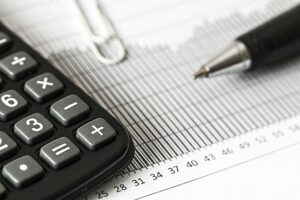For landlords, managing rental properties comes with various tax considerations that can significantly impact profitability. One crucial yet often overlooked aspect of tax planning is personal property depreciation. This tax benefit enables landlords to reduce their taxable income by accounting for wear and tear on certain assets in their rental properties.
Understanding how personal property depreciation works can empower landlords to make strategic financial decisions and maximize their returns. Let’s explore how landlords can leverage this tax-saving tool to their advantage.
What is Personal Property Depreciation?
Personal property depreciation refers to the gradual decrease in the value of certain assets over time due to regular use. For rental property owners, this includes items such as furniture, appliances, carpeting, and other movable property used in rental operations. The Internal Revenue Service (IRS) allows landlords to deduct this loss in value over the asset’s useful life, reducing the amount of taxable rental income.
Unlike structural components of a property, personal property items typically have shorter depreciation periods, making it possible to recover costs more quickly.
How Does Personal Property Depreciation Lower Taxable Income?
Personal property depreciation directly lowers the taxable income landlords report to the IRS. By claiming depreciation deductions, landlords can offset rental income, reducing the amount of taxes owed for a given year.
For example, if a landlord purchases new appliances for a rental unit, those appliances have a specific lifespan determined by the IRS depreciation schedule (commonly 5 years for household appliances). Each year, a portion of the purchase cost is deducted as depreciation, thereby lowering the landlord’s overall taxable income.
These deductions provide several financial benefits, which are essential for landlords aiming to optimize their rental property investments.
Benefits of Personal Property Depreciation for Landlords
1. Increase Cash Flow
Personal property depreciation reduces the amount of taxes landlords owe, effectively improving net cash flow. By claiming depreciation deductions, landlords can retain more income each year, which can be reinvested in property maintenance or acquiring additional rental assets.
For landlords juggling multiple properties or managing high operating costs, these tax savings can make a tangible difference in financial flexibility.
2. Offset Rental Income
One of the primary advantages of depreciation is its ability to offset rental income. Landlords often face a steady stream of rental income taxed at ordinary income rates. Depreciation deductions serve as a powerful tool for reducing taxable rental income, making it one of the most efficient ways to decrease the overall tax burden.
This feature can be particularly advantageous for landlords with high-value rental properties that generate significant income.
3. Support Long-Term Investment Strategies
By leveraging depreciation, landlords can strategically plan their finances for long-term investments. The tax savings generated from depreciation can be allocated toward property improvements, additional real estate purchases, or debt reduction. Over time, this supports the goal of building a more robust property portfolio while maintaining a sustainable cash flow.
4. Maximize Returns on Short-Lived Assets
Many personal property items used in rental operations—such as furniture, appliances, and even landscaping tools—tend to depreciate over a shorter time frame compared to the building structure. Depreciating these assets on a shorter schedule allows landlords to recover their investment costs quicker, directly enhancing ROI.
5. Optimize Tax Strategies Without Immediate Cash Expenditures
A unique benefit of depreciation is that it does not require actual cash outflow in the year the deduction is claimed. Landlords can continue to reap tax benefits for money that’s already been spent on acquiring depreciable assets.






